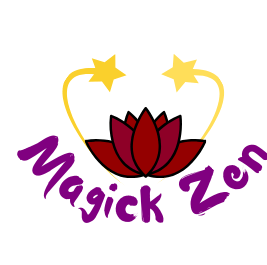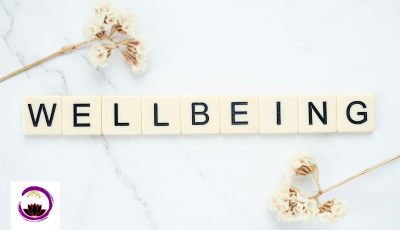This post may contain affiliate links. You can read my Disclaimer for more information.
In today’s fast-paced world, achieving balance and harmony can feel like a daunting task. Yet, holistic wellness offers a path to attain physical health, mental well-being, and spiritual practices that nourish the whole person. By integrating these aspects into our daily lives, we can foster a sense of overall wellness that leads to a more fulfilling existence.
This guide will delve into effective strategies to achieve holistic wellness, providing practical tips and insights to help you embark on this transformative journey.
Understanding Holistic Wellness
Holistic wellness is an approach that recognizes the interconnectedness of the physical, mental, and spiritual aspects of our lives. It emphasizes that true health is not just the absence of illness but rather a vibrant state of well-being encompassing all areas.
Research shows that stress can negatively impact both mental and physical health, making holistic wellness even more critical in today’s society.
According to a study published in the American Journal of Public Health, individuals who engage in holistic practices report lower levels of stress, anxiety, and depression. This highlights the importance of adopting a holistic approach for a more balanced life.

The three key components of holistic wellness include physical health, mental well-being, and spiritual practices, each playing a vital role in overall quality of life.
Physical Health: The Foundation of Wellness
Our physical health is the most visible aspect of wellness, and it serves as the foundation for a holistic approach. Prioritizing our bodies through proper nutrition, exercise, and rest is essential
Nutrition
Eating a balanced diet rich in whole foods, including fruits, vegetables, lean proteins, and whole grains, provides the nutrients required for optimal functioning. For example, incorporating foods high in Omega-3 fatty acids, like salmon and walnuts, can reduce inflammation and boost brain health. In addition to physical health, staying hydrated is crucial.
Drinking adequate water can improve energy levels, focus, and overall performance. A good rule of thumb is to drink half your body weight in ounces daily.
Exercise
Regular physical activity is another cornerstone of wellness. Engaging in at least 150 minutes of moderate exercise or 75 minutes of vigorous exercise weekly can significantly improve both physical and mental health.
Examples include walking, swimming, dancing, or yoga. Yoga, in particular, offers a dual benefit by enhancing physical strength while also calming the mind. The practice promotes flexibility, balance, and stress reduction, making it a perfect addition to a holistic wellness routine
Rest
Lastly, never underestimate the power of quality sleep. Adequate rest is essential for restoring the body and mind. Aim for 7-9 hours of sleep per night to enhance recovery, improve mood, and boost overall health

Mental Well-Being: Nurturing the Mind
Mental well-being is a crucial element of holistic wellness, impacting how we think, feel, and act. A healthy mind is essential for navigating life’s challenges and enjoying meaningful relationships
Mindfulness and Meditation
Incorporating mindfulness and meditation into your daily routine can significantly improve mental health. These practices encourage present-moment awareness and can help reduce anxiety and promote a peaceful state of mind.
Setting aside just 10 minutes a day can yield benefits. Consider apps like Headspace or Calm to guide your meditation journey. Research published found that just two weeks of mindfulness training can lead to improvements in attention and cognitive flexibility
Related Post- 6 key benefits of yoga
Journaling
Another effective tool aka my favorite tool, for mental wellness is journaling. Writing down thoughts and emotions can clarify feelings, reduce stress, and promote self-discovery. Aim to write regularly, focusing on gratitude, accomplishments, or challenges faced.
I got so many journaling post. Just search ‘journal’ and you will find them including prompts for everyone.
Social Connections
Building strong social connections is also vital for mental health. Engage with friends and family regularly, participate in community activities, or join clubs that align with your interests. These relationships provide support, increase feelings of belonging, and can significantly boost.
Make sure you are not in a toxic friendship
Spiritual Practices: Connecting to a Higher Purpose
Spirituality is often overlooked in discussions of wellness, yet it plays a crucial role in achieving balance and harmony. Spiritual practices help individuals connect with a higher purpose and provide deeper meaning in life
Mindful Practices
Engaging in mindful practices can enhance spiritual awareness. This can include meditation, prayer, or spending time in nature. Connecting with nature, such as hiking, gardening, or simply enjoying a sunset, can foster a sense of belonging and promote inner peace
Personal Reflection
Take time for personal reflection to explore your beliefs and values. This can involve reading spiritual texts, participating in discussions, or attending workshops that resonate with you.
Journaling your thoughts and experiences is a great way of reflection

Integrating the Three Pillars of Wellness
For true holistic wellness, it is vital to integrate the physical, mental, and spiritual components into your daily life. Here are actionable recommendations for achieving this:
- Establish a Routine: Create a balanced schedule incorporating time for physical activities, mental exercises, and spiritual practices. For example, begin your day with yoga or exercise, followed by a meditation session, and end with reflecting on your goals or journal entries
2. Set Clear Goals: Define specific wellness goals in each of the three areas. This may include committing to a healthy meal plan, dedicating time to practicing mindfulness each week, or exploring spiritual beliefs
3. Stay Flexible: Holistic wellness is a journey with ups and downs. Listen to your body and mind; adjust your practices as needed to prioritize your well-being.
4. Seek Professional Guidance: If you’re unsure how to start or maintain your wellness journey, consider seeking guidance from professionals such as nutritionists, therapists, or holistic health coaches
Embracing a Holistic Lifestyle
Adopting a holistic lifestyle requires commitment and openness to change. The benefits of this approach are profound, leading to better physical health, greater emotional resilience, and a deeper connection to spirituality.
Remember, holistic wellness is not just an end goal; it is a continuous journey towards balance and harmony. The practices, routines, and insights shared in this guide can serve as a roadmap on your path to achieving holistic wellness.
As you embrace this journey, keep in mind that every small step you take toward better health and well-being adds up. The combination of physical health, mental well-being, and spiritual practices reflects the essence of a balanced life.
By actively engaging in holistic wellness, you will cultivate a richer, more meaningful life, filled with peace, joy, and fulfillment.
Start today, and take control of your holistic journey towards a vibrant and harmonious existence.

